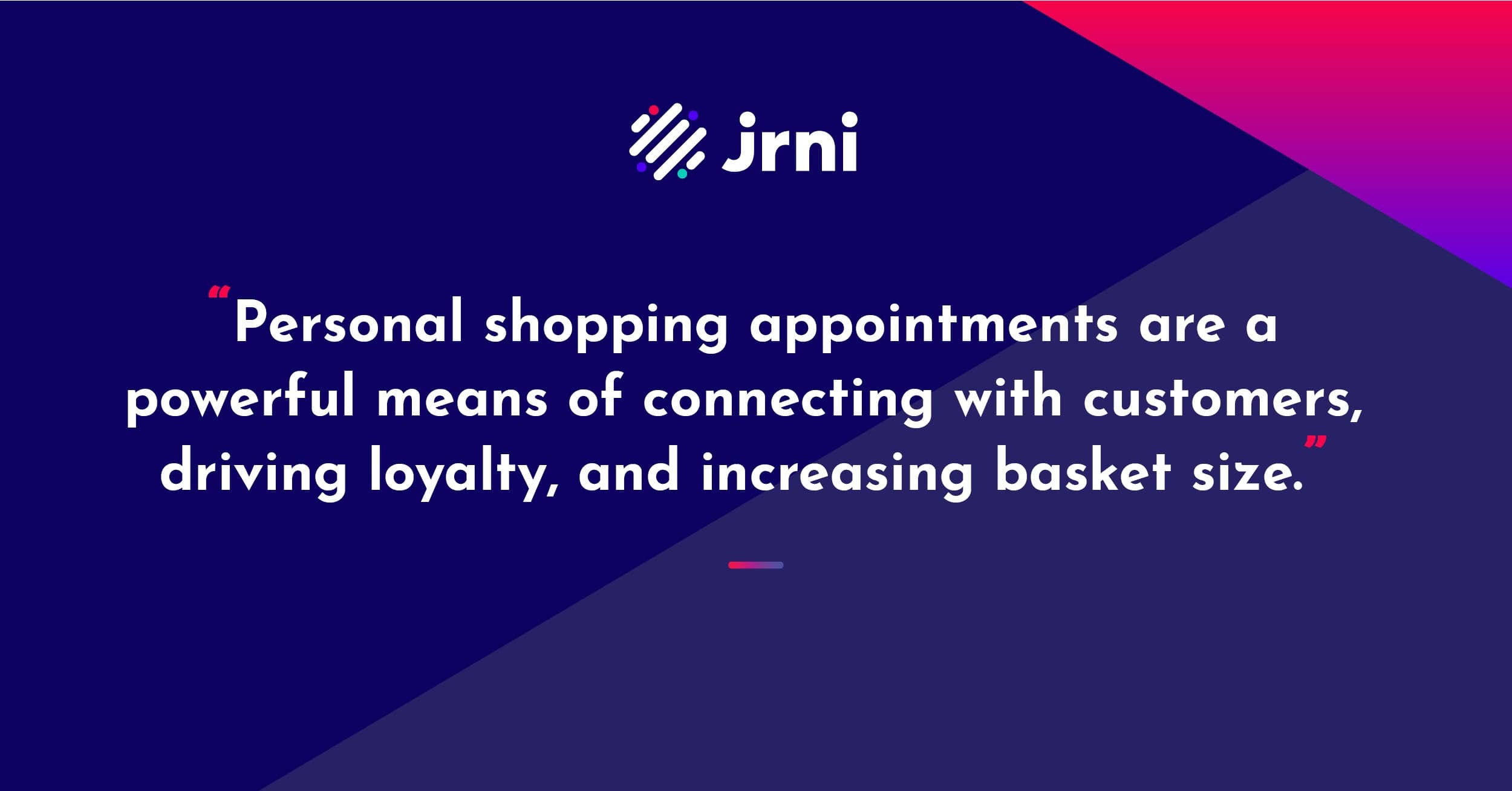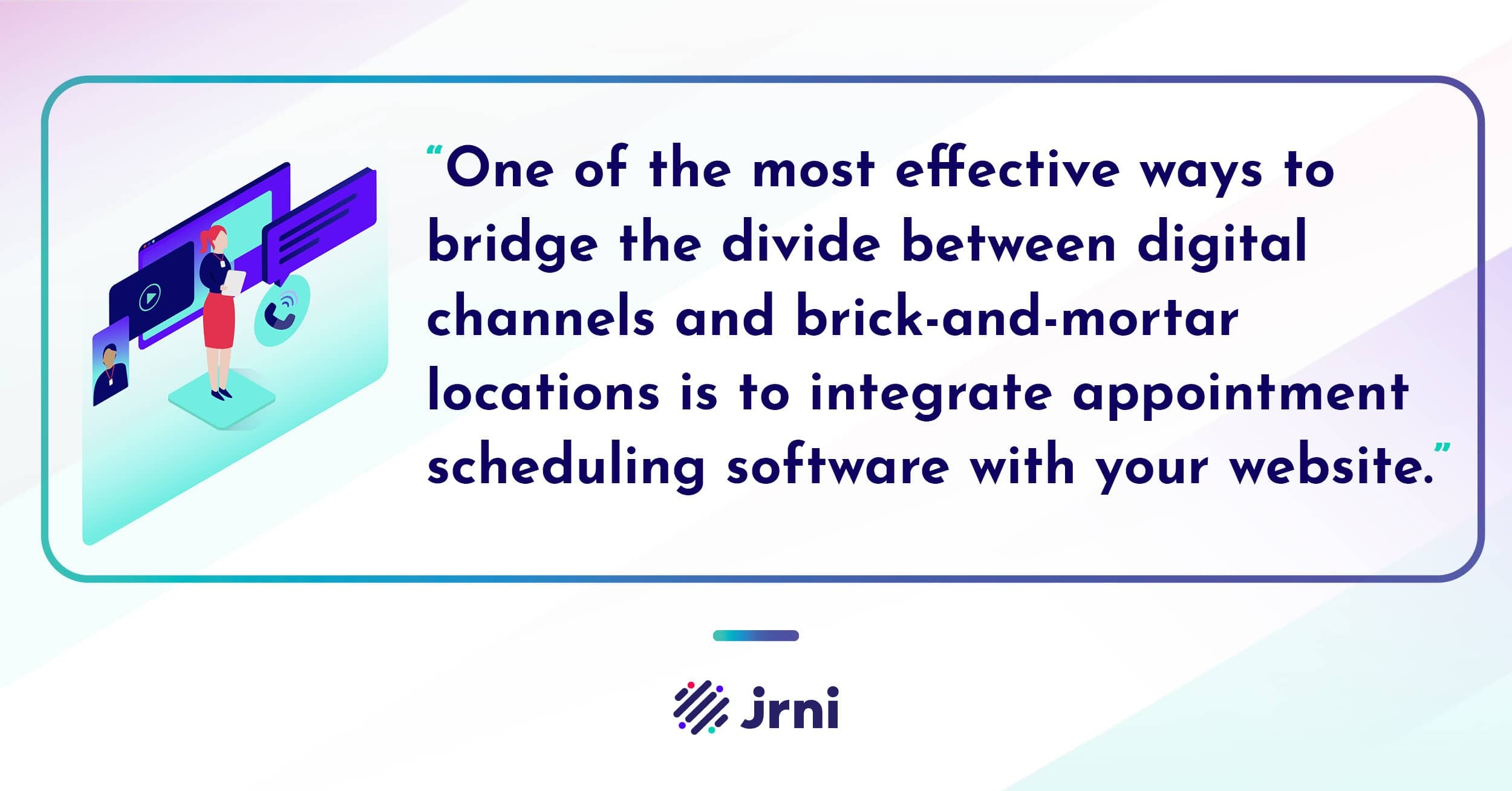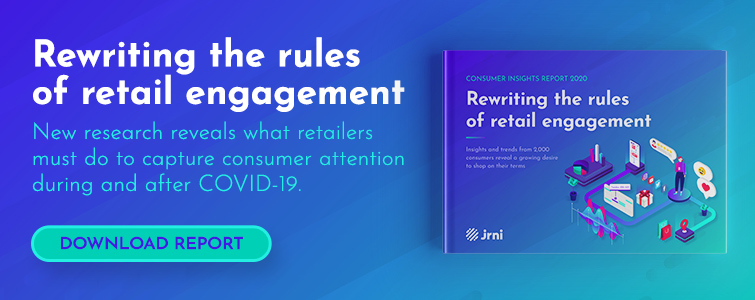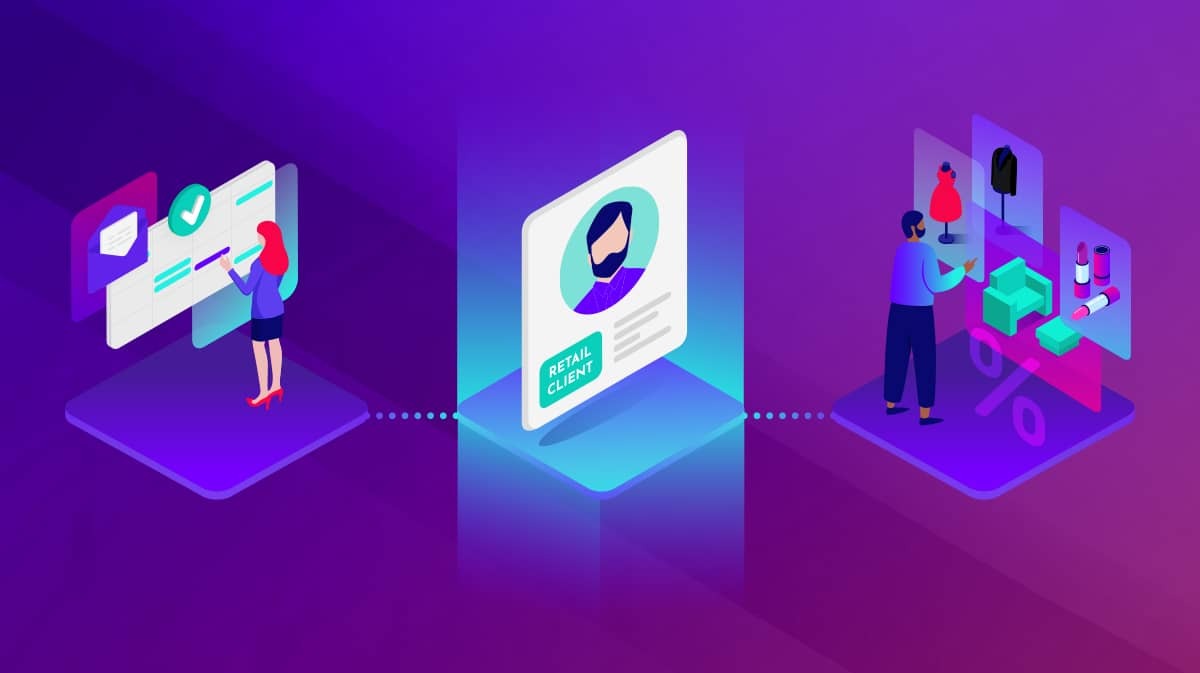Contrary to the premature proclamations that eCommerce killed in-store shopping, retail brands are finding that their brick-and-mortar stores are a vital touchpoint in their customer experiences. For the discerning consumer, it’s not just about picking something off the shelf - it’s about getting the hyper-personal expert concierge touch that helps them get the most out of every trip to the store.
Personal shopping appointments are a powerful means of connecting with customers, driving loyalty, and increasing basket size. In this post, we’ll examine why retail brands are adding services like personal shopping and styling to round out their customer offerings and differentiate themselves.

What is personal shopping?
As a concept, personal shopping service has its origins in the world of London’s venerable department stores, such as Harrods and Selfridges. The idea of the personal shopper, however, has gone far beyond department stores. Modern retailers are seeing customer service and personal shopping as a differentiator in increasingly crowded markets.
How can personal shopping services drive business?
Improved customer connection through personalization
As eCommerce brands rose to prominence, they invested heavily in algorithms that largely aimed to mimic the job that a personal shopper would have done. For example, almost everyone has seen the “Frequently Purchased Together” and “Customers who viewed this item also viewed” sections on every product page in Amazon’s inventory.
It’s an algorithmic way of doing what a personal shopper aims to do: Introduce customers to complementary products that will make them feel as though their needs are understood and their desires are being met. The benefit to the eCommerce retailer is that this process facilitates cross-sells and upsells.
But what gets missed is the personal touch. These algorithms can show a shopper what other people bought, and it can make surprisingly effective guesses about what a particular shopper might want based on that data, but it can’t truly create a shopping experience that makes it feel like your order was tailor-made to your specifications by an expert who took the time to understand you.
A personal shopping appointment does just that. It allows your trained experts to meet your customers face-to-face, take the time to connect with them and understand what they want, and create a unique shopping experience.
Increased basket size
That kind of unique experience would be worth it if only for the customer loyalty it generates. But this level of customer service has a direct impact on the financial performance of a given store and a company as a whole. As Business of Fashion reported, creating an environment and bringing in the resources to provide personal shopping experiences at scale is no small investment, but the returns can be staggering.
“It can increase a sale to grow almost 100 percent on average,” Marshal Cohen, chief industry analyst at market research firm The NPD Group, told Business of Fashion. “Imagine a person going into a store to buy a new skirt; personal shopping can turn that skirt into an outfit.”
Chinese department store Lane Crawford found that the basket size from a personal shopping appointment is almost four times larger than the average sale.
At JRNI, we've also seen similar results from brands we work with. One of our customers with over 250 stores noticed that customers who schedule and attend appointments spend 4x more than walk-ins. Similarly, another multinational customer saw their basket size increase 3x for customers who had scheduled appointments.
The process is fairly straightforward. A professional personal shopper can take what the customer thinks they want, and turn it into a fun process of discovery in which they are shown not just what they asked for, but everything they need to truly walk out feeling like they weren’t just another customer. If a shopper enters a store wanting to see a pair of boots, they can also see the accessories and clothes that complete the outfit.
Learn more: The ROI of appointments

Deeper customer data
Tracking customer visits at the individual appointment level will give you valuable insights when aggregated. Understanding who your best customers are and what they truly want is an indispensable asset that will inform several aspects of the wider operations, including your promotions, merchandising, and hiring.
With this data, you can get a sense of seasonal trends, which items are frequently cross-sold/upsold, and which customer profiles exist in your overall base. In the next section we’ll discuss some of the many ways that data can be used to drive appointment scheduling. You can also get a better feel for favorite styles, shoppers, best days for shopping and adjust each visit to address each.
Better use of employees’ time
One problem that has historically plagued traditional retailers is inefficient use of employee time. While there are a number of strategies you can use to reduce employee downtime, including by-appointment personal shopping as part of your business model can be a powerful means of making better use of employee time.
Rather than trying to predict peak and off times for a given store, allowing customers to book an appointment to see a stylist or personal shopper will make it easier to schedule employees for when they know customers will be coming in, and scale down the staff presence in stores when appointments are light.
Additionally, your employees will be better prepared for any given customer when they know who is coming in and what they want to do during their appointment. Before the customer arrives, employees can pre-select products in the customer’s size and bring them to the fitting room. Upon the customer’s arrival, the stylist can focus solely on providing a great and personalized experience.

How to boost personal shopping service appointments
Facilitate a seamless customer journey
Today’s customer journey is not linear - it takes place across online and offline channels. Whether someone is buying from you for the first time, or is thinking about returning for another purchase, they are likely interacting with multiple touchpoints along the way. Consistency in messaging across every touchpoint is key. A disjointed customer experience means frustrated customers and money left on the table.
One of the most effective ways to bridge the divide between digital channels and brick-and-mortar locations is to integrate appointment scheduling software with your website. This makes it simple for users to view promotions, browse your selection online, and book an appointment with a personal shopper/stylist all in one sitting.
One possible flow could be that your customer receives an email promotion from you, clicks through to the offer, and leaves the site. A few days later, a social ad brings them back to the site, where they browse and see something they like. In that same session, they could book an appointment through your website or your app - no hassles and the same consistent message throughout their journey.
Communicate on social media
It’s crucial that high-value customers who are looking for personal shopping experiences trust and respect the skills and taste of the person they’re letting into their lives to ultimately spend money for them.
In an age where social media - and Instagram in particular - plays such a major role in how consumers find new products, you can’t afford to keep your stylists and shoppers hidden in the store. If you give your staff the guidance and resources they need to build and maintain a professional, eye-catching social media presence, they can be some of your most powerful marketing assets. Here’s how you can start:
- Provide photography tips. When it comes to posting on social media, your stylists should feel empowered to curate their own feeds. To ensure that posts are engaging their customer base/followers, teach them a few basic iPhone photography skills. This will ensure whether they’re posting about new arrivals, new appointment types, or their availability, each post looks professional and interesting.
- Train your staff on social media best practices. Effective use of hashtags, commenting etiquette, and using engagement data to better hone their profiles will help your stylists and experts stand out in a crowded space.
- Allow social media to be a two-way communication channel. If someone reaches out to an official retailer social profile or an individual stylist with a serious and honest query, be sure they get a timely response.
Segment and email high-value customers
The customer data you collect from personal shopping appointments will give you what you need to start segmenting your customers. While there are countless ways you can segment customers, one of the most powerful is to isolate your high-value customers and give them extra attention.
Value can mean many different things in different contexts, but in this case, segmenting customers by average basket size per appointment, most frequent visitors, and top referrers can all be a way to understand who your most valuable clients are. Once you have these segments created, you can use email and other personal channels to engage them with exclusive content and offers.
Start a referral program
Delighting your customers has the effect of improving word of mouth for your personal shopping services. But it never hurts to add a little more incentive to sweeten the deal for your best customers. Devoted customers who have enjoyed their experiences in your stores and referred their friends and family should be rewarded. This can be as simple as a coupon for their next appointment, or access to exclusive products and services.
Focus on ongoing training with personal shoppers
Personal shoppers aren’t just sales reps. For your customers to be wowed, they need to be equal parts expert, concierge, and confidant. That means that investing in ongoing training is essential for success in any personal shopping service. Here’s what to do:
- Train on soft skills. Product expertise is obviously important, but the ability to make customers feel like they were heard, respected, and helped to find the exact right items for them is what will stick with them long after the moment of purchase. Invest in training for soft skills, and make that a point of emphasis when hiring a new personal stylist or shopper.
- Keep in contact with customers to find new opportunities to shop for them. You will eventually have a database full of customer data that will help your experts find reasons to reach out and connect with their clients. Retailers should empower their stylists and shoppers to reach out to customers proactively with personal messages and recommendations that show them someone is thinking of them.
- Encourage strong one-to-one relationships with customers/shoppers. When customers don’t see their personal shopper as just a salesperson, it goes a long way to fostering long-term loyalty. When customers feel like they can ask for advice without being pressured to buy or forced into something they don’t need, it ultimately creates a path to repeat purchases and lower customer acquisition costs in the long run.
Host events concurrently with your appointments
Smart retailers understand that consumers need more than just a vast selection and discount pricing to justify going to a retail location. They want exclusive events and in-store experiences that connect them to their passions and interests.
Consumer research on the types of events customers are looking for from their favorite retailers revealed that special occasions like new product launches, experiential education, DIY workshops, exclusive performances, and celebrity appearances would entice more than half of consumers in the US and UK to go into a store.
Retailers who aren’t incorporating events such as the ones listed here are missing out on crucial opportunities to engage with and delight their best customers. Check out our blog post, “8 examples of in-store events that bring in customers” to see what kinds of in-store retail events other retailers have seen success with.
Want to learn more about changes in consumer behavior and what new shopping habits are here to stay? Then check out the "Rewriting the rules of retail engagement" report!




